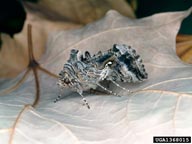
Joseph Berger, Bugwood.org
cabbage looper (Trichoplusia ni) adult(s)
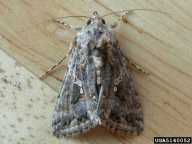
Keith Naylor, Bugwood.org
cabbage looper (Trichoplusia ni) adult(s)
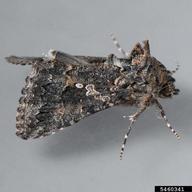
Mark Dreiling, Bugwood.org
DNA iBOL LPOKD621-09
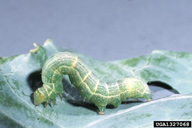
Alton N. Sparks, Jr., University of Georgia, Bugwood.org
Late instar larva
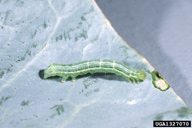
Alton N. Sparks, Jr., University of Georgia, Bugwood.org
Early instar larvae and damage (windowpaning)
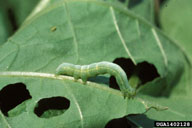
R.J. Reynolds Tobacco Company , Bugwood.org
Loopers are pale green, about one inch long when full grown, and taper slightly toward the head. There is a thin, white line along each side of the body and two others along the middle of the back. Larvae are characterized by the presence of three pairs of fleshy prolegs (in addition to three pairs of jointed legs behind the head) and their habit of moving in a "looping" motion. They generally feed on the undersides of leaves, leaving small to moderate size ragged holes. Larvae also spin silken cocoons on the undersides of leaves in which they pupate.
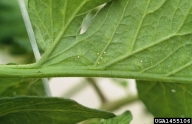
Whitney Cranshaw, Colorado State University, Bugwood.org
cabbage looper (Trichoplusia ni) egg(s) on tomato (Lycopersicon esculentum)
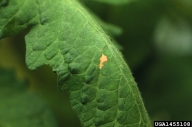
Whitney Cranshaw, Colorado State University, Bugwood.org
Meconium voided after adult emergence
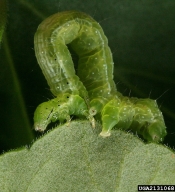
David Cappaert, Bugwood.org
Washtenaw County, MI
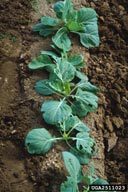
David Riley, University of Georgia, Bugwood.org
Damage to young seedlings
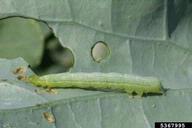
Russ Ottens, University of Georgia, Bugwood.org
cabbage looper (Trichoplusia ni) larva(e) on broccoli (Brassica oleracea var. italica)
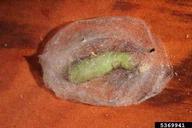
Whitney Cranshaw, Colorado State University, Bugwood.org
Young pupa within cocoon